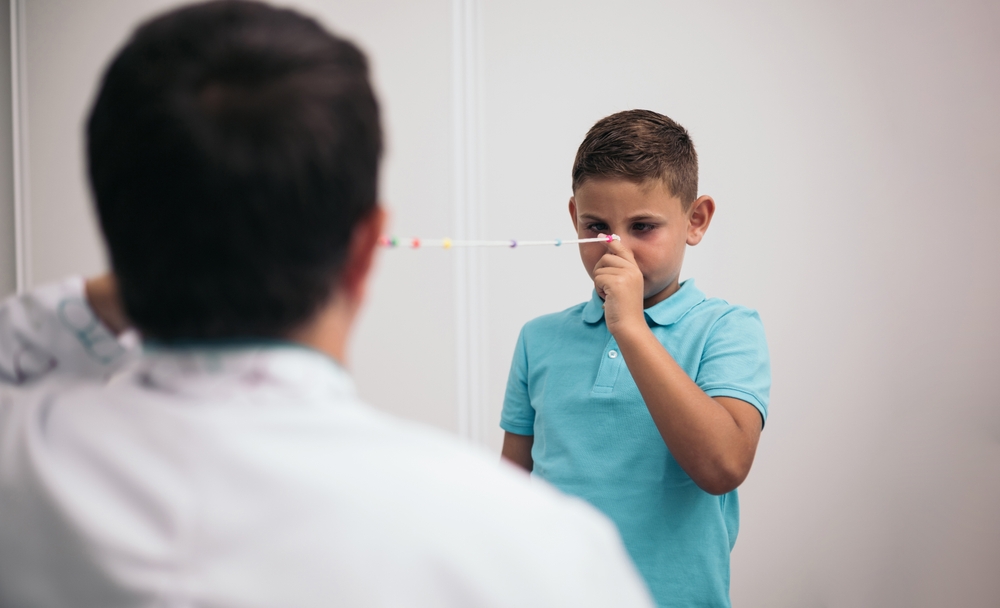
Your child's ability to see the world clearly is crucial to their overall development and daily functioning. Vision therapy is a specialized form of optometric care that goes beyond glasses and contact lenses. It is a proactive approach to ensuring your child's vision contributes positively to their learning and engagement with the world around them.
What is Vision Therapy?
Vision therapy is often described as physical therapy for the eyes and brain. It is a non-surgical and customized treatment program designed to correct certain vision problems and improve visual skills. Unlike glasses or contact lenses that compensate for vision issues, vision therapy aims to teach the visual system to correct itself. It is based on the principle of neuroplasticity and utilizes a variety of exercises to strengthen the eyes and improve coordination between them.
Conducted under the supervision of a specialized optometrist, vision therapy sessions are tailored to the unique needs of each child. The therapy may include the use of lenses, prisms, filters, computerized visual activities, and non-computerized viewing instruments. Over time, these exercises help to reinforce the eye-brain connection and lead to lasting improvements in vision.
It's important to understand that vision therapy is not a one-size-fits-all solution. The duration and specifics of the therapy will vary based on the individual's needs. Some children may see significant improvements in a few weeks, while others may require a longer period. However, the goal remains the same: to enable your child to experience clear and comfortable vision that supports their learning and everyday activities.
Common Eye Conditions in Children
Amblyopia, commonly known as lazy eye, occurs when one eye develops differently than the other, leading to reduced vision. It often stems from conditions like strabismus (misaligned eyes) or a significant difference in prescription between the two eyes. Symptoms may include a noticeable eye turn, squinting, or head tilting. Without treatment, amblyopia can persist into adulthood, potentially limiting career choices and affecting quality of life.
Strabismus is characterized by eyes that do not properly align and work together. Depending on the type of strabismus, one eye may turn in, out, up, or down. This misalignment can lead to double vision or the brain ignoring input from the misaligned eye, which can cause amblyopia. Early detection and treatment are vital to prevent long-term visual consequences.
This condition affects the eyes' ability to turn inward (converge) when focusing on nearby objects. Symptoms can include eyestrain, headaches, double vision, difficulty reading, and a short attention span, especially during close work. Convergence insufficiency can significantly impact a child's ability to learn and perform in school.
Recognizing these common eye conditions in children and their symptoms is the first step toward getting the right help. Many of these issues can be effectively addressed with vision therapy, which can improve visual function and alleviate associated symptoms.
Signs That Your Child May Benefit from Vision Therapy
If your child is struggling with reading, writing, or other academic tasks, it could be a sign of an underlying vision problem. Symptoms such as skipping lines while reading, confusing similar-looking words, or quickly losing their place may indicate visual tracking issues. Vision therapy can help improve these skills, making learning and schoolwork less of a struggle.
Children may not always be able to articulate their visual difficulties, which can manifest as behavioral issues. Avoidance of reading or other visually demanding activities, frequent rubbing of the eyes, or excessive blinking could suggest discomfort caused by vision problems. Through vision therapy, these behaviors may diminish as visual comfort and abilities improve.
Headaches, eyestrain, and even nausea after visual tasks can point to a vision problem. If your child complains of discomfort during or after activities that require visual focus, such as using digital devices or homework, it's worth investigating further. Vision therapy can address the root cause of these symptoms, leading to greater comfort and endurance for visual tasks.
Observing your child in various settings and noting any recurring issues can help you determine if they might benefit from vision therapy. It's essential to consult with a vision care professional who can provide a comprehensive eye exam and advise on the best course of action.
Schedule a Consultation at High5 Vision Development Today
Vision therapy is a powerful tool that can change the way your child sees the world. Recognizing the signs of vision problems and understanding the benefits of vision therapy are the first steps in ensuring your child's visual system supports their development and daily experiences. Whether it's improving academic success, enhancing sports performance, or simply enjoying the beauty of life with clear vision, vision therapy can make a profound difference.
If you're ready to explore the potential of vision therapy for your child, visit High5 Vision Development at our office in New Braunfels, Texas. Please call (210) 507-7979 to schedule an appointment today.








